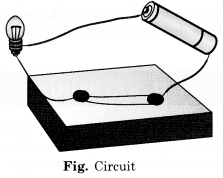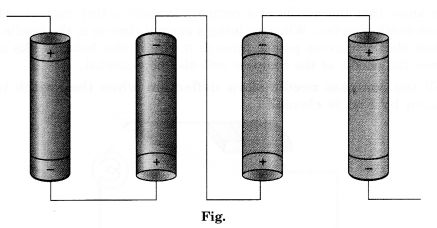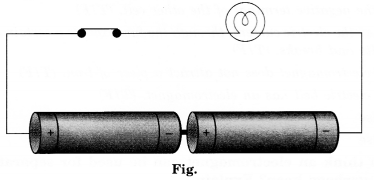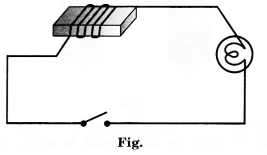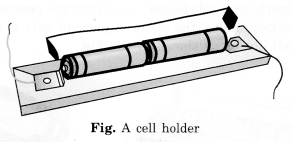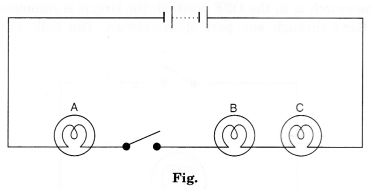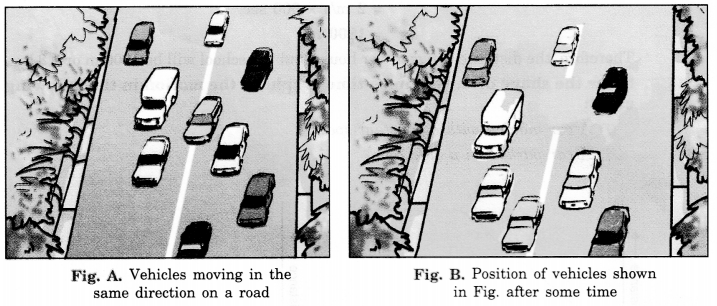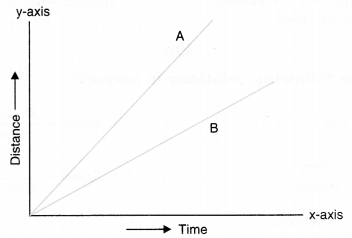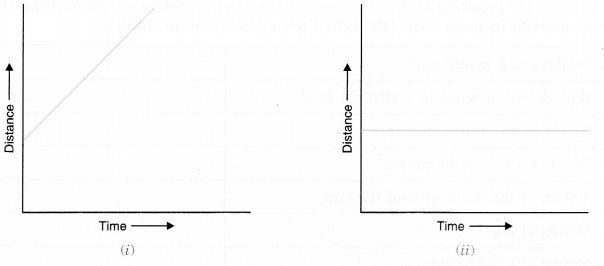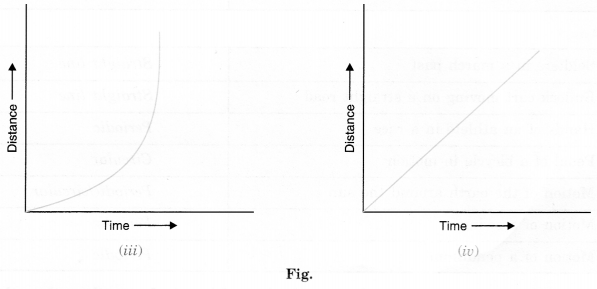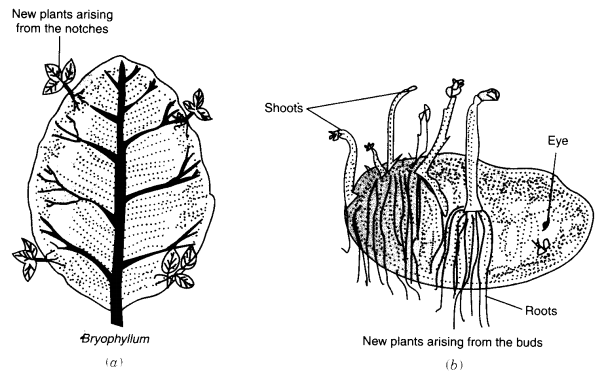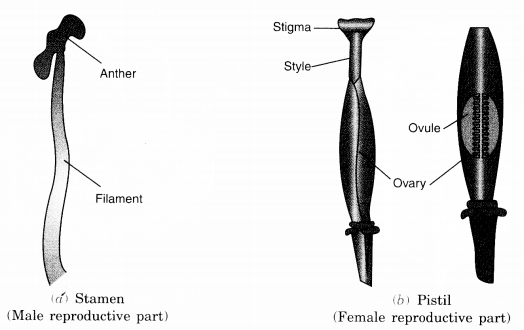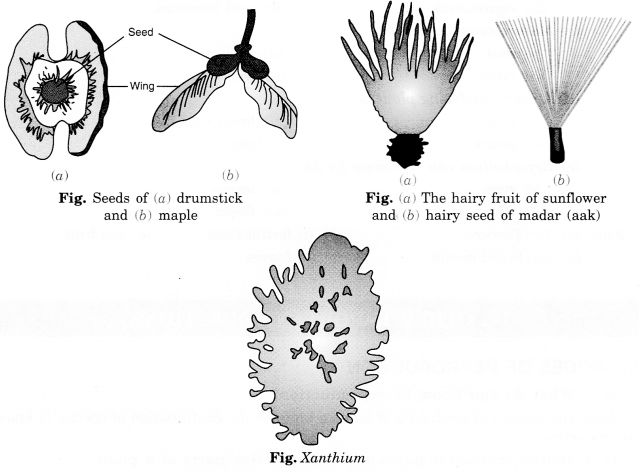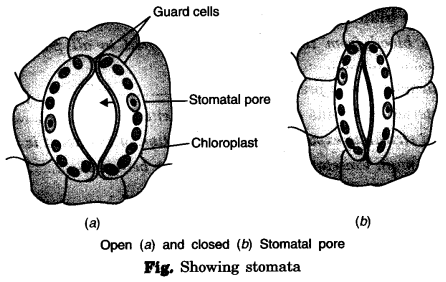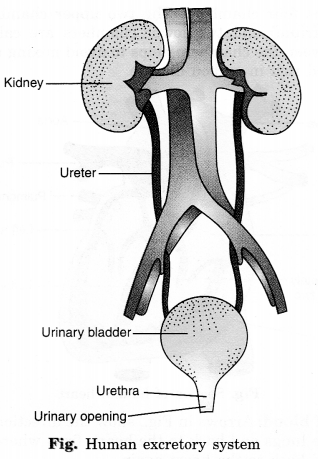NCERT Solutions for Class 6 Hindi Bal Ramkatha Chapter 1 बाल रामकथा are part of NCERT Solutions for Class 6 Hindi. Here we have given NCERT Solutions for Class 6 Hindi Bal Ramkatha Chapter 1 बाल रामकथा.
| Board | CBSE |
| Textbook | NCERT |
| Class | Class 6 |
| Subject | Hindi |
| Chapter | Chapter 1 |
| Chapter Name | बाल रामकथा |
| Number of Questions Solved | 18 |
| Category | NCERT Solutions |
NCERT Solutions for Class 6 Hindi Bal Ram Katha (Chapter 1 to 12) बाल रामकथा
(पाठ्यपुस्तक से)
प्रश्न 1.
पुस्तक के पहले अध्याय के पहले अनुच्छेद में लेखक ने सजीव ढंग से अवध की तसवीर प्रस्तुत की है। तुम भी अपने आसपास की किसी जगह का ऐसा ही बारीक चित्रण करो। यह चित्रण मोहल्ले के चबूतरे, गली की चहल-पहल, सड़क के नज़ारे आदि किसी का भी हो सकता है जिससे तुम अच्छी तरह परिचित हो।
उत्तर
मैं अपने गाँव के माहौल से अच्छी तरह परिचित हूँ। यहाँ का सरल, सहज तथा घटना रहित जीवन ही यहाँ की मुख्य विशेषता है। यहाँ का वातावरण शांत तथा शहर के कोलाहल से बहुत अलग है। पक्षियों की चहचहाहट, गाय-भैंसों के सँभाने की ध्वनि तथा बच्चों की हँसी का शोर ही यहाँ की शांति को भंग करता है। प्रकृति से निकटता यहाँ के परिवेश की खासियत है। दूर-दूर तक खेतों में फैली हुई हरियाली और आम के बगीचे यहाँ आकर्षण के केंद्र हैं। बसंत में हवा में फैली महक हो या बरसात का कीचड़ और पानी, गर्मी की सुहानी शाम हो या जाड़े की गुनगुनी धूप-वाकई सही मायनों मे गाँव में ही मौसम का मजा लिया जा सकता है। मेरे गाँव में अब अधिकांश घर पक्के बन चुके हैं। हाँ, अभी कुछ घरों की छत खपड़े की या फूस की है। गाँव में सड़क बन चुकी है और स्कूल भी खुल चुके हैं। बिजली भी है, पर कभी-कभी ही आती है।
एक तरह से अच्छा भी है, कम से कम समाज और प्रकृति से निकटता तो बनी हुई है। शहरों में यदि इसका अभाव है, तो इसका मुख्य कारण कहीं न कहीं बिजली भी है। बच्चे दोस्तों के साथ खेलने के बदले कंप्यूटर पर गेम खेलना अधिक पसंद करते हैं। मेरे गाँव में ऐसा नहीं है। शाम को गाँव के चबूतरे पर बैठ कर लोग अपने सुख-दुख बाँटते हैं, गाँव की समस्याओं पर चर्चा करते हैं। घर के छोटे-बड़े झगड़े बुजुर्ग आपस में मिलकर सुलझा लेते हैं और अगर कोई बड़ी समस्या हो तो पंचायत में उसके निदान को प्रयास होता है। मेरे गाँव में ज्यादातर लोग कृषक तथा मजदूर हैं। कुछ लोग अध्यापन के कार्य से भी जुड़े हुए हैं। मेरा गाँव मुझे बहुत प्रिय है।
प्रश्न 2.
विश्वामित्र जानते थे कि क्रोध करने से यज्ञ पूरा नहीं होगा, इसलिए वे क्रोध को पी गए। तुम्हें भी कभी-कभी गुस्सा आता होगा। तुम्हें कब-कब गुस्सा आता है और उसका क्या परिणाम होता है?
उत्तर
हाँ मुझे भी कई बार गुस्सा आता है। साधारणतः जब कोई मेरी बात नहीं सुनता या मुझसे पूछे बिना मेरी चीजों को हाथ लगाता है तो मुझे गुस्सा आता है। मेरे गुस्से का परिणाम अक्सर बुरा ही होता है। या तो मुझे डाँट सुननी पड़ती है या फिर किसी से झगड़ा हो जाता है। मैंने कई बार यह तय किया है कि मैं गुस्सा नहीं करूंगा, पर कभी न कभी गुस्सा आ ही जाता है।
प्रश्न 3.
राम और लक्ष्मण ने महाराज दशरथ के निर्णय को खुशी-खुशी स्वीकार किया। तुम्हारी समझ में इसका क्या कारण रहा होगा?
उत्तर
राम और लक्ष्मण एक आदर्श पुत्र थे। उन्होंने समाज के सामने जो आदर्श और मूल्य स्थापित किए, उसी की वजह से आज भी उनकी पूजा की जाती है। वे अपने पिता के वचनों का मान रखना चाहते थे। वह नहीं चाहते थे कि उनके कारण कोई उनके पिता को झूठा या वचन से फिरने वाला कहे। उन्हें अपने वंश की परंपरा का भी ध्यान था। रघुकुल में वचन का मान रखने के लिए उनके पूर्वजों ने प्राणों की बाजी तक लगा दी थी। उन्हें तो पिता के वचन कायम रखने के लिए केवल वन में ही वास करना था। उनके पिता वृद्ध हो चुके थे। वे उन्हें दुखित भी नहीं करना चाहते थे, इसलिए उन्होंने उनके निर्णय को खुशी-खुशी स्वीकार कर लिया।
प्रश्न 4.
विश्वामित्र ने कहा, “ये जानवर और वनस्पतियाँ जंगल की शोभा हैं। इनसे कोई डर नहीं है। उन्होंने ऐसा क्यों कहा?
उत्तर
जानवर और वनस्पतियाँ किसी भी जंगल का अभिन्न अंग होती हैं। इनके बिना वनों । के अस्तित्व की कल्पना भी नहीं की जा सकती है। प्रकृति का पारिस्थितिक संतुलन बनाए रखने में भी ये सहायक होते हैं। धरती पर जीवन की उपस्थिति के लिए भी ये आवश्यक है। अतः ये हमारे मित्र हैं और हमें इनसे भयभीत नहीं होना चाहिए। जानवर और वनस्पतियों से ही धरती की सुंदरता भी बनी हुई है। इनका महत्त्व राम-लक्ष्मण को समझाने के लिए विश्वामित्र ने कहा कि ये जंगल की शोभा हैं। हमें इनसे नहीं डरना चाहिए।
प्रश्न 5.
लक्ष्मण ने शूर्पणखा के नाक-कान काट दिए। क्या ऐसा करना उचित था? अपने उत्तर का कारण बताओ।
उत्तर
राम और लक्ष्मण ने शूर्पणखा का विवाह-प्रस्ताव ठुकरा दिया था, इसलिए क्रोधित शूर्पणखा सीता पर झपटी । फलस्वरूप लक्ष्मण ने उसके नाक-कान काट लिए। शूर्पणखा एक राक्षसी थी फिर भी एक स्त्री को इंस प्रकार अपमानित करना सही नहीं ठहराय जा सकता। उसे दंडित करने के अन्य उपाय भी थे। यदि कोई स्त्री गलत कर्म करती है, तो उसे दंडित अवश्य किया जाए परंतु ऐसे किसी दंड के पक्ष में मैं नहीं हूँ जिससे उसके सम्मान को ठेस पहुंचे।
प्रश्न 6.
विश्वामित्र और कैकेयी दोनों ही दशरथ को रघुकुल के वचन निभाने की प्रथा याद दिलाते हैं। तुम अपने अनुभवों की मदद से बताओ कि क्या दिया हुआ वचन निभाना हमेशा संभव होता है?
उत्तर
दिया हुआ वचन निभाना हमेशा संभव नहीं होता है, क्योंकि परिस्थितियाँ हमेशा अपने अनुकूल नहीं होती हैं। मुझे याद है मैंने एक बार अपनी एक मित्र को वचन दिया था कि उसके जन्मदिन पर उसके घर जरूर आऊँगा, लेकिन उस दिन अचानक मेरे दादाजी की तबियत बहुत ज्यादा खराब हो गई। ऐसी स्थिति में मैं उस के जन्मदिन में जाने की बात सोच भी नहीं सकता था। अक्सर हालात हमें वचन निभाने की अनुमति नहीं देते हैं। अतः हमें बहुत सोच समझ कर किसी से कोई वादा करना चाहिए।
प्रश्न 7.
मान लो कि तुम्हारे स्कूल में रामकथा को नाटक के रूप में खेलने की तैयारी चल रही है। तुम इस नाटक में उसी पात्र की भूमिका निभाना चाहते हो जो तुम्हें सबसे ज्यादा अच्छी, दिलचस्प या आकर्षक लगती है। वह पात्र कौन सा है और क्यों? ।
उत्तर
वैसे तो रामकथा के सभी पात्र अनुकरणीय हैं परंतु हनुमान का चरित्र अत्यंत दिलचस्प तथा आकर्षक है। हनुमान में वीरता साहस, बुधि तथा पराक्रम कूट-कूटकर भरा हुआ है। राम के प्रति उनकी भक्ति अनन्य है। वह श्रीराम के सच्चे सेवक हैं। उनकी सहायता के बिना राम सीता को पुनः प्राप्त नहीं कर पाते। इन सारी विशेषताओं के बाद भी हनुमान का स्वभाव सरल है। वह अपनी क्षमताओं से अनजान हैं तथा उन्हें स्वयं पर जरा भी गुमान नहीं है। अतः हनुमान की भूमिका निभाना मुझे ज्यादा अच्छा लगेगा।
प्रश्न 8.
सीता बिना बात के राक्षसों के वध के पक्ष में नहीं थीं। जबकि राम राक्षसों के विनाश को ठीक समझते थे। तुम किससे सहमत हो-राम से या सीता से? कारण बताते हुए उत्तर दो।
उत्तर
सीता की बात सही थी परंतु वह राक्षसों के स्वभाव से अनजान थीं। राक्षस अकारण निर्दोष ऋषि मुनियों का वध करते थे। उनका अत्याचार स्त्रियों तथा बच्चों पर कहर बन कर टूटता था। उनमें दया भाव का नामोनिशान तक न था। उनसे समझदारी की आशा करना ही व्यर्थ था। राम उनसे परिचित थे इसलिए उनके विनाश को ही सही समझते थे। मैं राम से सहमत हूँ।
प्रश्न 9.
रामकथा के तीसरे अध्याय में मंथरा कैकेयी को समझाती है कि राम को युवराज बनाना उसके बेटे के हक में नहीं है। इस प्रसंग को अपने शब्दों में कक्षा में नाटक के रूप में प्रस्तुत करो।
उत्तर
मंथरा – अरी मूर्ख रानी! तेरे सर पर विपदा आ पड़ी है और तू घोड़े बेचकर सो रही है?
कैकेयी – क्या हुआ? क्या बात है?
मंथरा – कल राम का राज्याभिषेक होने वाला है।
कैकेयी – यह तो खुशी की बात है।
मंथरा – तेरी बुधि फिर गई है। यह तेरे और भरत के विरुद्ध राजा दशरथ का षड्यंत्र है।
कैकेयी – यह कैसी उलटी बात है। राज तो बड़े बेटे को ही मिलता है और फिर राम मुझसे कितना स्नेह करते हैं।
मंथरा – मेरी भोली रानी! यह सब एक छलावा है। राम के युवराज बनते ही तुम्हारी और भरत की हैसियत एक दास की हो जाएगी।
कैकेयी – क्या सचमुच ऐसा होगा? अब मैं क्या करूं? मंथरा – जाकर दशरथ को अपने वचनों की याद दिलाकर भरत के लिए राज और राम के लिए चौदह वर्ष का वनवास माँग लो।
कैकेयी – परंतु मैं यह सब करूंगी कैसे?
मंथरा – तुम मैले कपड़े पहन कर कोपभवन चली जाओ। राजा आएँ तो उनसे बात मत करना। जब वह मनाने लगें तो अपने दोनों वचन माँग लेना।
कैकेयी – मैं यही करूंगी और महाराज का षड्यंत्र किसी भी तरह सफल नहीं होने देंगी।
प्रश्न 10.
तुमने जंगल और जनकपुर’ तथा ‘दंडक वन में दस वर्ष में राक्षसों दूद्वारा मुनियों को | परेशान करने की बात पढ़ी। राक्षस ऐसा क्यों करते थे? क्या यह संभव नहीं था कि दोनों शांतिपूर्वक वन में रहते? कारण बताते हुए उत्तर दो।
उत्तर
शांतिपूर्वक निवास करना राक्षसों के स्वभाव के विपरीत था। उत्पात मचाना विनाश को निमंत्रण देना तथा अकारण निर्दोष प्राणियों की हत्या करना उनकी आदत थी। राक्षस किसी हिंसक पशु से भी अधिक बँखार थे। सिंह और व्याघ्र भी किसी पशु का शिकार तभी करते हैं जब उन्हें भूख लगी हो, परंतु राक्षस अकारण ही वनवासियों पर अत्याचार किया करते थे तथा उन्हें कष्ट पहुँचा कर प्रसन्न होते थे। उनकी प्रकृति को देखते हुए कामना नहीं की जा सकती है कि वह ऋषि-मुनियों के साथ शांति से वन में रहने का प्रयास कर सकते थे।
प्रश्न 11.
हनुमान ने लंका से लौट कर अंगद और जामवंत को लंका के बारे में क्या-क्या बताया होगा?
उत्तर
हनुमान ने लंका से लौटकर अंगद और जामवंत को उस राक्षस नगरी की सुंदरता के विषय में बताया होगा। वहाँ के भव्य भवनों तथा सुवासित उद्यानों का वर्णन किया होगा। उन्होंने बताया होगा कि लंका की इमारतों के प्राचीर और कंगूरे कैसे आकाश छूते हैं। हनुमान ने उन्हें सीता की जानकारी दी होगी कि वह रावण की अशोक वाटिका में बंदी हैं तथा हर समय राक्षसों से घिरी रहती हैं। हनुमान ने इसकी चर्चा भी अवश्य की होगी कि कैसे उन्होंने अपनी जलती हुई पूँछ से सोने की लंका को आग की लपटों के हवाले कर दिया। रावण से अपनी मुलाकात का वर्णन भी उन्होंने जरूर किया होगा।
प्रश्न 12.
तुमने बहुत सी पौराणिक कथाएँ और लोक कथाएँ पढ़ी होंगी। उनमें क्या अंतर होता है? यह जानने के लिए पाँच-पाँच के समूह में कक्षा के बच्चे दो-दो पौराणिक कथाएँ और लोक कथाएँ इकट्ठा करें। कथ्य (कहानी), भाषा आदि के अनुसार दोनों प्रकार की कहानियों का विश्लेषण करें और उनके अंतर लिखें।
उत्तर
पौराणिक कथाएँ धार्मिक मान्यताओं पर आधारित होती हैं। उनमें देवी-देवताओं से जुड़े प्रसंग होते हैं। पौराणिक कथाएँ संस्कृत या हिन्दी में होती हैं। वहीं लोक कथाएँ साधारण जन में प्रचलित कहानियाँ हैं जिनमें जन-जीवन से जुड़े प्रसंग होते हैं। लोक कथाएँ आम बोलचाल की भाषा में लिखी होती हैं। हमारे समाज में कई पौराणिक तथा लोक कथाएँ कही-सुनी जाती हैं। बच्चे उन्हें सरलता से इकट्ठा कर सकते हैं।
प्रश्न 13.
क्या होता यदि
(क) राजा दशरथ कैकेयी की प्रार्थना स्वीकार नहीं करते।
(ख) रावण ने विभीषण और अंगद का सुझाव माना होता और युद्ध का फैसला न किया होता।
उत्तर
(क) यदि राजा दशरथ कैकेयी की प्रार्थना स्वीकार नहीं करते तो जैसा कि कैकेयी ने उनसे पहले ही कहा था, वह अपने प्राण त्याग देतीं। यदि ऐसा न भी होता तो भी दशरथ रघुकुल के पहले राजा होते जो अपने वचन से फिर गए होते। उनका वह सम्मान न रहता जो उनकी मृत्यु के बाद भी उन्हें मिलता रहा। राम को वन नहीं जाना पड़ता। उनका राज्याभिषेक हो गया होता। वो अपना राज बहुत अच्छे से चलाते। परंतु फिर भी राम कथा का उतना प्रचलन न होता क्योंकि यह जिन कारणों से आज पढ़ी सुनी और देखी जाती है, वे कारण उत्पन्न न होते। जिन आदर्शों और मूल्यों की स्थापना रामायण में की गई है, संसार उस उदाहरण से वंचित रह जाता।
(ख) यदि रावण ने विभीषण और अंगद का सुझाव माना होता और युद्ध का फैसला न किया होता तो वह सीता को राम को लौटा देता। रावण और राम की सेना के बीच वह भयानक युद्ध न हुआ होता। असंख्य वीरों को अपने प्राण ने गॅवाने पड़ते तथा रावण की असमय मृत्यु भी न हुई होती।
प्रश्न 14.
नीचे कुछ चारित्रिक विशेषताएँ दी गई हैं और तालिका में कुछ पात्रों के नाम दिए गए हैं। प्रत्येक नाम के सामने उपयुक्त विशेषताओं को छाँटकर लिखो
पराक्रमी, साहसी, निडर, पितृभक्त, वीर, शांत, दूरदर्शी, त्यागी, लालची, अज्ञानी, दुश्चरित्र, दीनबंधु, गंभीर, स्वार्थी, उदार, धैर्यवान, अड़ियल, कपटी, भक्त, न्यायप्रिय और ज्ञानी।।
राम………….
हनुमान……………..
सीता……………
लक्ष्मण……………
कैकेयी………….
रावण………………
विभीषण………………
भरत………………
उत्तर
राम – पराक्रमी, साहसी, निडर, पितृभक्त, वीर, शांत, दूरदर्शी, त्यागी, दीनबंधु, गंभीर, उदार, धैर्यवान, न्यायप्रिय, ज्ञानी।
लक्ष्मण – पराक्रमी, साहसी, निडर, पितृभक्त, वीर, दूरदर्शी, त्यागी, भक्त।
रावण – पराक्रमी, साहसी, निडर, वीर, अज्ञानी, दुश्चरित्र, अड़ियल, कपटी।
विभीषण – साहसी, निडर, दूरदर्शी, ज्ञानी ।
सीता – शांत, त्यागी, उदार, अड़ियल।
कैकेयी – लालची, अज्ञानी, दुश्चरित्र, स्वार्थी, अड़ियल, कपटी।
हनुमान – पराक्रमी, साहसी, निडर, वीर, शांत, दूरदर्शी, त्यागी, भक्त, ज्ञानी।
भरत – त्यागी, गंभीर, उदार, धैर्यवान, भक्त, न्यायप्रिय, ज्ञानी।
प्रश्न 15.
तुमने अपने आसपास के बड़ों से रामायण की कहानी सुनी होगी। रामलीला भी देखी होगी। क्या तुम्हें अपनी पुस्तक रामकथा की कहानी और बड़ों से सुनी रामायण की कहानी में कोई अंतर नज़र आया? यदि हाँ तो उसके बारे में कक्षा में बताओ।
उत्तर
बड़ों से सुनी गई रामकथा तथा रामलीला में राम के जीवन की कुछ महत्त्वपूर्ण घटनाओं का ही उल्लेख मात्र होता है परंतु पुस्तक ‘बाल रामकथा’ की कहानी से हमें राम के जीवन के हर छोटे-बड़े घटनाक्रम की जानकारी मिली। इस पुस्तक के माध्यम से हमें श्रीराम के जीवन का विस्तृत परिचय प्राप्त हुआ।
प्रश्न 16.
राम कथा में कई नदियों और स्थानों के नाम आए हैं। इनकी सूची बनाओ और एटलस में देखो कि कौन-कौन सी नदियाँ और जगहें अभी भी मौजूद हैं। यह काम तुम चार-चार के समूह में कर सकते हो।
उत्तर
रामकथा में सरयू, गंगा, गोदावरी, गंडक तथा गोमती और सोन नदियों का उल्लेख है। इस कथा में अयोध्या, मिथिला, चित्रकूट, किष्किंधा, दंडक वन, शृंगवेरपुर, विंध्याचल, प्रयाग और लंका जैसे कुछ स्थानों का उल्लेख है। ये सारे स्थल अपने पुराने या नए नामों के साथ आज भी भारत भूमि पर उपस्थित हैं। छात्र एटलस में इन्हें ढूंढ़ने का प्रयास करें।
प्रश्न 17.
यह रामकथा वाल्मीकि रामायण पर आधारित है। तुलसीदास द्वारा रचित रामचरितमानस के बारे में जानकारी इकट्ठी करो और उसे चार्टपेपर पर लिखकर कक्षा में लगाओ।
• रामकथा का नाम
• रचनाकार का नाम
• भाषा/प्रांत
उत्तर
कथा का नाम – रामचरित मानस
रचनाकार – तुलसीदास
भाषा/प्रांत – अवधी अवध (पूर्वी उत्तर प्रदेश)
छात्र यह जानकारी चार्ट पेपर पर दर्शाएं।
प्रश्न 18.
‘नगर में बड़ा समारोह आयोजित किया गया। धूमधाम से।’ (पृ०-3)
“एक दिन ऐसी ही चर्चा रही थी। गहन मंत्रणा ।’ (पृ०-4)
‘पाँच दिन तक सब ठीक-ठाक चलता रहा। शांति से। निर्विघ्न।। | (पृ०-10)
रामकथा की इन पंक्तियों में कुछ वाक्य केवल एक या दो शब्दों के हैं। ऐसा लेखक ने किसी बात पर बल देने के लिए, उसे प्रभावशाली बनाने के लिए या नाटकीय बनाने के लिए किया है। ऐसे कुछ और उदाहरण पुस्तक से छाँटो और देखो कि इन एक-दो शब्दों के वाक्य को पिछले वाक्य में जोड़कर लिखने से बात के असर में क्या फर्क पड़ता है। उदाहरण के लिए- ‘पाँच दिन तक सब शांति से निर्विघ्न और ठीक-ठीक चलता रहा।
उत्तर
अन्य उदाहरण
(i) नदी पार जंगल था। घना दुर्गम।
– नदी पार घना और दुर्गम जंगल था।
(ii) महाराज पलंग पर पड़े हैं। बीमार। दीनहीन।
– महाराज पलंग पर बीमार और दीनहीन पड़े हैं।
छात्र उपर्युक्त उदाहरणों में दोनों वाक्यों के बीच के अंतर पर ध्यान दें।
We hope the NCERT Solutions for Class 6 Hindi Bal Ramkatha Chapter 1 बाल रामकथा help you. If you have any query regarding NCERT Solutions for Class 6 Hindi Bal Ramkatha Chapter 1 बाल रामकथा, drop a comment below and we will get back to you at the earliest.


